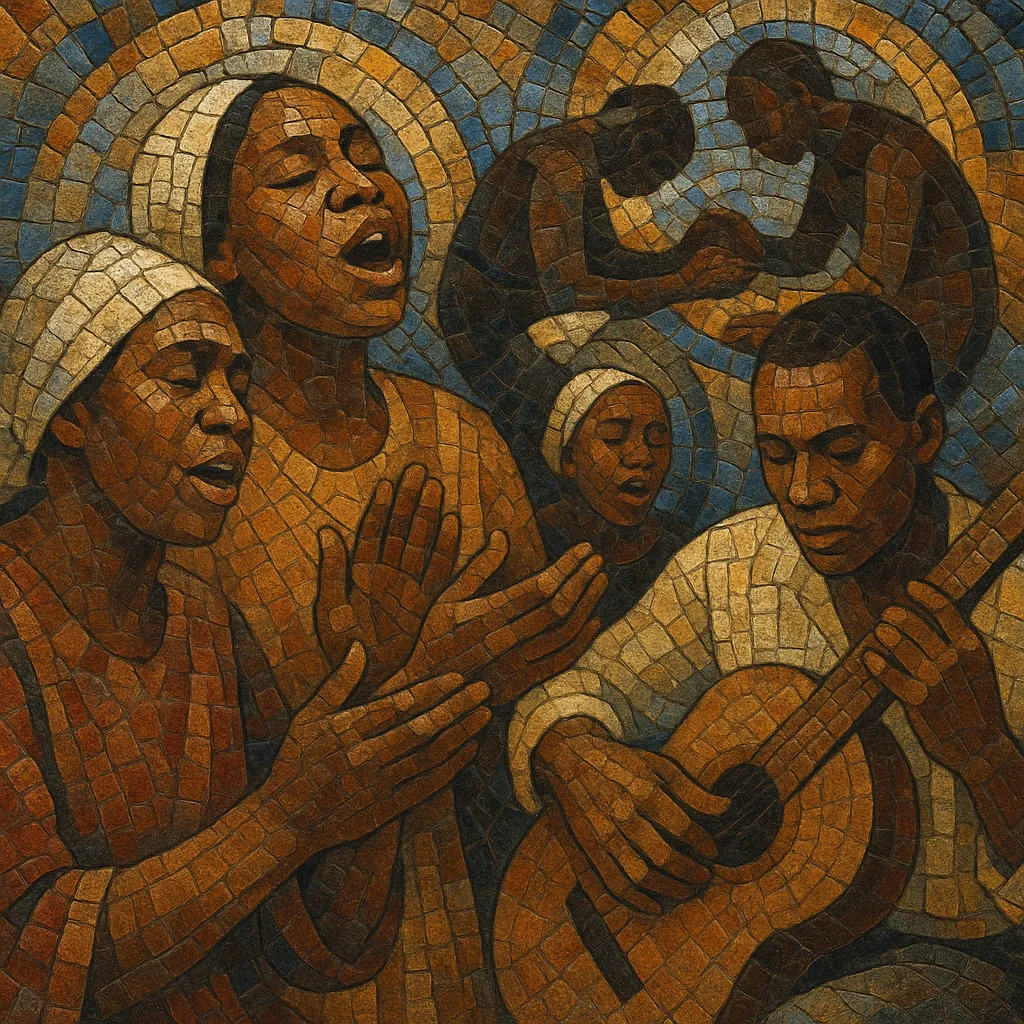
Spirituals are African American religious folk songs created primarily by enslaved people in the United States during the 19th century. Sung largely a cappella in group settings, they combine call-and-response leadership with communal refrains, handclaps, foot-stomps, and the ring shout—a circular, counterclockwise dance that preserves West and Central African participatory practices.
Textually, spirituals draw on biblical narratives—especially Exodus, bondage and deliverance, water and journey motifs—to express both faith and coded hope for freedom. Many songs carried double meanings, functioning as worship and as veiled commentary or guidance (e.g., “Wade in the Water,” “Steal Away”).
Musically, spirituals favor pentatonic and modal melodies, blue notes, heterophony and spontaneous ornamentation. Their rhythms often use off-beat clapping and polyrhythmic layering. Unlike later gospel, early spirituals were not instrument-driven or industry-composed; they were orally transmitted, fluid in form, and shaped by community improvisation. In the late 19th and 20th centuries, arrangers adapted them into concert spirituals for choirs and classically trained soloists.
Spirituals grew out of the encounter between West and Central African musical practices and Protestant Christianity in the United States. Enslaved Africans preserved call-and-response, ring shout movement, polyrhythm, and improvisation while absorbing biblical language through revivals and camp meetings. Early spirituals were transmitted orally in plantations, praise houses, and brush arbor meetings.
By the mid-1800s, spirituals were a central medium of worship and communal solidarity. Many carried double meanings—religious on the surface, emancipatory beneath—helping to sustain hope and sometimes to communicate covert information. The first major publication, “Slave Songs of the United States” (1867), documented this repertoire soon after the Civil War.
In 1871, the Fisk Jubilee Singers brought spirituals to national and international stages, introducing arranged choral versions (concert spirituals). Arrangers such as Harry T. Burleigh and Hall Johnson created SATB settings that retained the spirituals’ rhythmic vitality while employing classical harmony and form. Spirituals were embraced by leading concert artists (e.g., Roland Hayes, Marian Anderson, Paul Robeson), who helped canonize them as art songs.
Spirituals profoundly influenced blues, jazz, gospel, R&B, soul, and American choral music. During the mid-20th century, their themes and melodies fed the Freedom Songs of the Civil Rights Movement. Contemporary choirs, soloists, and community ensembles continue to perform both folk-style and concert spirituals, sustaining a living tradition that bridges sacred devotion, historical memory, and cultural resilience.

